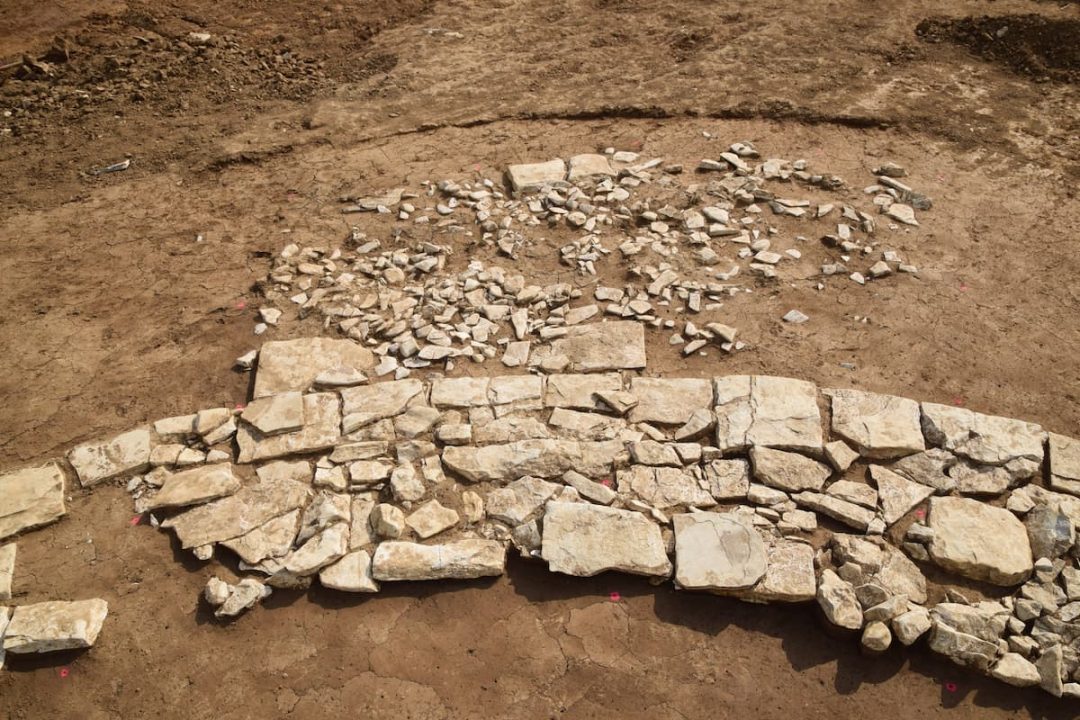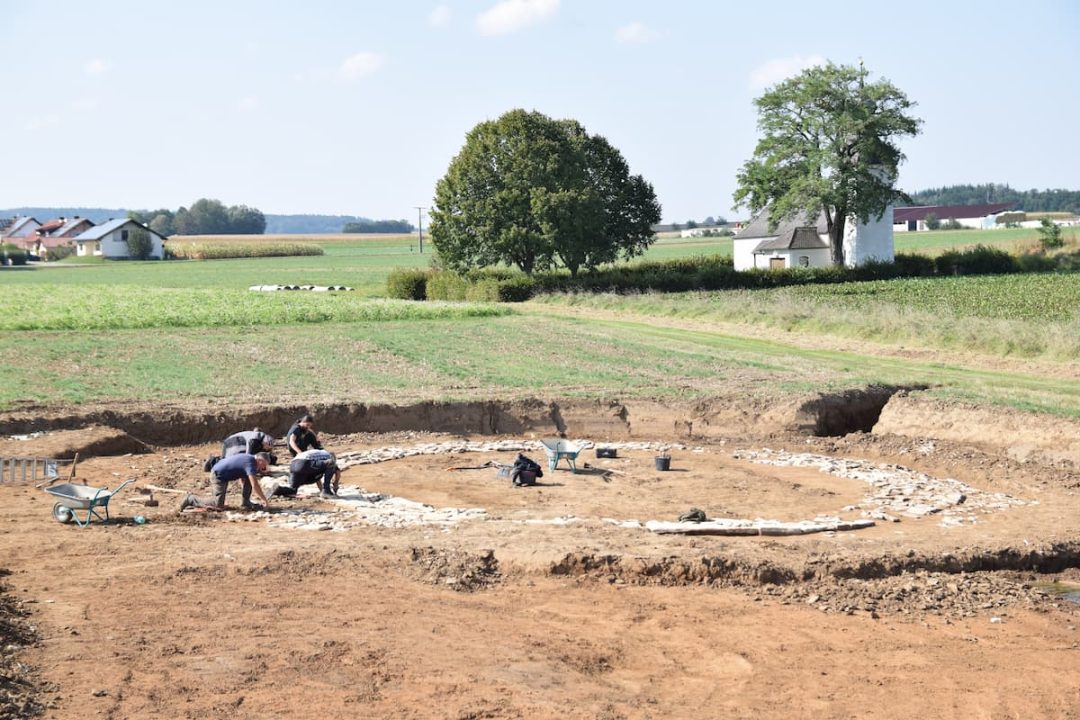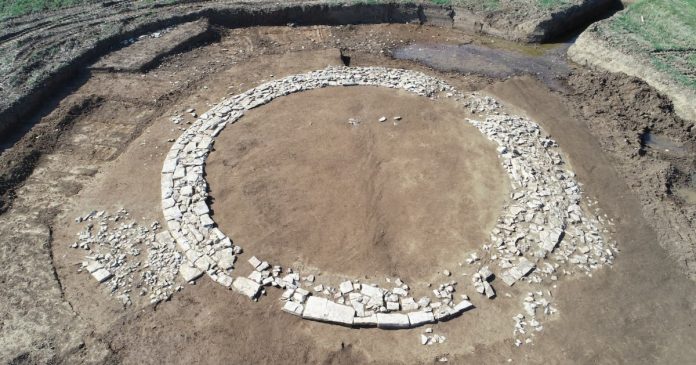During construction in autumn 2024, archaeologists uncovered a Roman-era tomb foundation northeast of Wolkertshofen, a hamlet in Nassenfels, Upper Bavaria.
Structure and Significance of the Find
The monument features a circular stone ring about 12 metres wide, built from finely cut ashlars fitted with precision. A 2 × 2 metre square base on the south side likely supported a stele or statue.
This design matches a tumulus, an earthen mound encircled by a retaining wall — a burial type rarely found in the Roman province of Raetia.

Archaeological Setting and Surrounding Landscape
The site sits within a protected archaeological area, discovered during preparation for a storm-water retention basin. The monument stands beside a former Roman road connecting Nassenfels to the Altmühl Valley and lies near a rural estate (villa rustica). These factors suggest the tomb’s placement was symbolic — visible, prestigious, and connected to the wider Roman infrastructure.

An Empty Tomb: A Cenotaph?
Strikingly, excavation within the stone ring revealed no skeletal remains nor grave goods. The absence has led archaeologists to hypothesise the structure may be a cenotaph — a symbolic funerary monument erected to honour an individual whose body lies elsewhere.
Cultural and Historical Implications
Tumuli are widespread in Italy and Central Europe but appear less often in the drier Roman provinces of northwestern Europe. The Wolkertshofen tumulus is unique for combining Mediterranean design elements, like the ashlar ring and statue base, with older local traditions such as the earthen mound. This blend may reflect a fusion of Roman and indigenous culture. Mathias Pfeil, General Conservator of the Bayerisches Landesamt für Denkmalpflege (BLfD), described the discovery as “completely unexpected” for the region in both scale and form.
Why the Discovery Matters for Understanding Roman Bavaria
The monument expands our understanding of Roman funerary practices in Raetia and southern Upper Germania.
It highlights how Roman elites might have used monumental architecture to assert status and memory in provincial landscapes.
The possible cenotaph form raises questions about the mobility of elites and post‐mortem commemorative practices in the Roman frontier provinces.
Because tumuli of this size and design are rare in the Augsburg region, the discovery will inspire further research on settlement patterns, social hierarchy, and cultural exchange in the late Roman period.
Next Steps in Investigation
Archaeologists will need to conduct detailed analysis of the stonework, stratigraphy, any residual organic traces, and the surrounding landscape context to refine the dating, function and cultural attribution of the tomb. They will also explore connections with nearby Roman infrastructure (road, villa) and earlier prehistoric activity in the area (Neolithic, Bronze Age, Iron Age) — since the site had long been occupied.
If you like this story check out : Archaeologists Uncover Mysterious Grinding Stone Deposits in Central Germany

